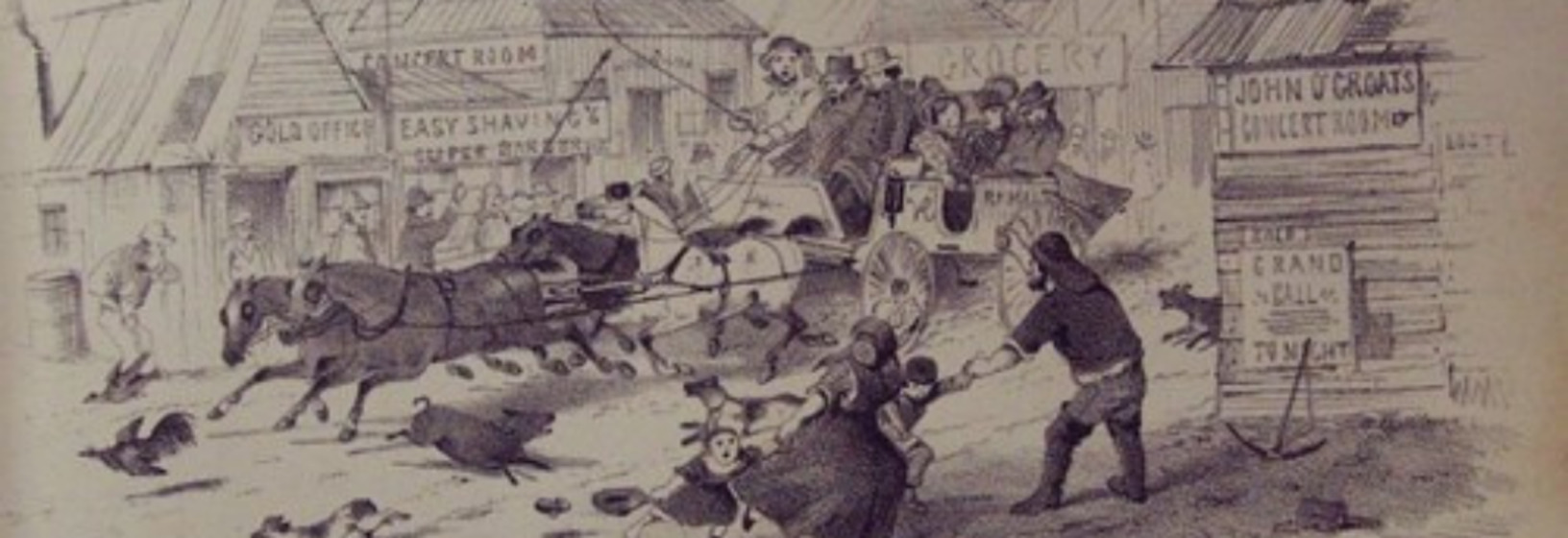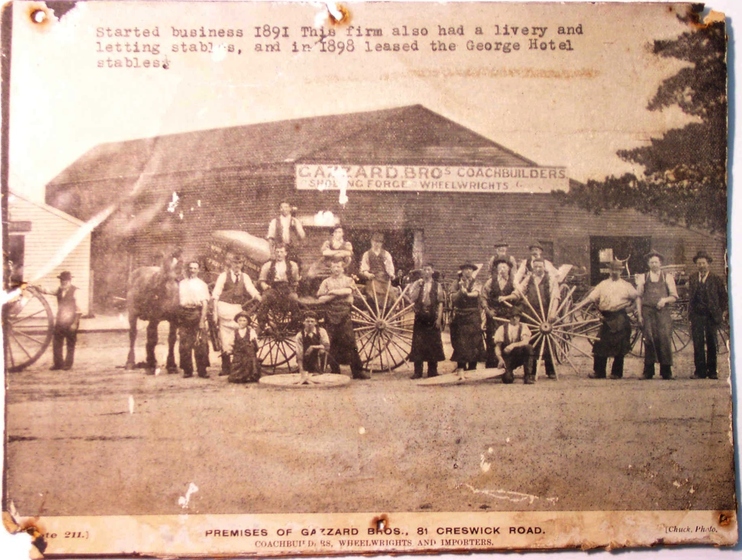Making & Using Transport on the Goldfields
Ballarat’s coachbuilding industry and horse-drawn transport, as depicted in Victorian cultural collections.
During the nineteenth century, horse-drawn vehicles were an essential part of life in rural Victoria.
In Ballarat, local coachbuilding firms assisted with the town’s growth in more ways than providing passage to the diggings. Horse-drawn vehicles were vital for the delivery of goods, responding to emergencies and often symbolised one’s social standing.
The Gold Rush ushered in a period of incredible growth for colonial Victoria. Ballarat’s escalating population and burgeoning industries highlighted the need for horse-drawn transport – not only for getting to the diggings, but also for delivering goods and building material, responding to emergencies and performing significant social rituals.
In the early nineteenth century, the goldfields were dominated by vehicles either imported from England or English-style vehicles built locally. Coaches, carriages and carts were typically constructed part-by-part, one at a time. As a result, each vehicle was highly unique.
By the mid-1850s, the American coachbuilding tradition had arrived on the goldfields. The American method, which had been developing since the 1840s, relied on mass-produced, ready-made components. In comparison to English designs, American coaches were known to be more reliable for goldfields travel; they were primed for long-distance journeys on rough terrain and were less likely to tip over.
As the nineteenth century progressed, a plethora of English, American and European vehicles populated Ballarat – both locally made and imported. The abundance of coaches, carriages and carts – and their value to the Ballarat community – can be seen in photographs and objects catalogued here on Victorian Collections.










